Russia’s Patriotic Alternative to Coca-Cola Is Made Out of Bread
For centuries, Russians have celebrated their Slavic roots with kvass.

A Russian domestic scene: A mother of two serves her children dinner around a table set for four. Everything is well-lit, pine-paneled, idyllic. Daddy’s arrival seems imminent. The door swings open—and a man who may or may not be Gene Simmons saunters in. (He’s in full Kiss regalia, and clutching a plastic bag of groceries and a bottle of cola, with a star-spangled label.) His wife is stricken; his children equally fraught. “Simmons” holds up the bottle, narrows his eyes, and begins to ululate. The little girl bursts into tears.
In 10 seconds, the scene has descended into kitchen sink absurdism. The culprit is the brown liquid in the bottle—an American invasion into a Russian home. But there’s a solution. Simmons begins to drink a tall glass of a different brown drink, labelled with the Russian brand name Nikola. (If you say it aloud in Russian, it sounds like: “not cola.”) Immediately, his get-up falls away, and the make-up disappears. Our hero is just another Russian dad, home from work, and his daughter throws herself into his arms. Order is restored. Cyrillic text appears on the screen: “”No to cola-nization. Kvass. To the health of the nation.”
This is a 2007 television advertisement for kvass, a brewed Russian drink traditionally made from a heady combination of fermented rye bread, yeast, malt, sugar, and water. The result has a tart, fizzy sweetness not unlike kombucha and sits stickily on the tongue. It’s slightly alcoholic—around 0.5 percent—though historically drunk somewhat like a soda. (Commercial brands such as Nikola are sweeter and mostly malt-based.) Kvass fell out of favor as the Iron Curtain came tumbling down, but, in recent years, it’s been marketed as a patriotic alternative to “cola-nizing” American sodas. This approach ties into a rich history of kvass-centered patriotism that dates back to the early-19th century.
By that time, kvass of one form or another had been drunk in Russia for close to a thousand years—the earliest known reference dates back to 989 A.D. At the baptism of one Prince Vladimir, guests apparently enjoyed “food, honey in barrels, and bread-kvass.” It was the drink of choice of monks (its antibacterial properties made it safer than water), and has a well-established literary pedigree that includes appearances in the writing of both Tolstoy and Pushkin. (The latter describes one character who “has never drunk anything except kvas since the day she was born,” while in his Eugene Onegin, the Russian people “needed kvas no less than air.”) It is, in short, an exceptionally Russian drink—perhaps even more so than vodka.
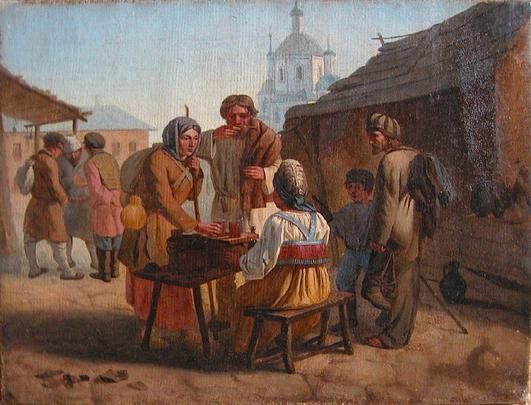
For a long time, kvass seems to have had no particular political inflection. But from the 16th century onwards, foreigners often spoke of the drink in fairly sniffy tones—Medieval Swedes compared their well-to-do compatriots’ wine-drinking habits to the less refined “Russian Voivods [who] sit in their smokehouses and drink kvass and water.” This may have fed into Russia’s Western-oriented intellectuals choosing to snub the drunk, which they viewed as a symbol of Russia’s backwardness, in the mid-19th century. But this anti-Russia, anti-kvass position only increased the drink’s popularity: Russians drank it because they had always done so, but also because it became a declaration of Slavic pride and love for the motherland.
In the 1820s, under the threat of the rising West, people began making an observable and special point of being “Russian,” which involved drinking a lot of kvass, and wearing what they perceived to be quintessentially Russian garb. This backlash prompted the Russian aristocrat Pyotr Vyazemsky to coin the term “kvass patriotism.” For the past 200 years, it’s been used by scholars and critics to describe a particular kind of Russian “jingoism”—what the Russian economist Anna Sanina describes as a sort of “wrong love to the motherland, when people praise their ‘own’ just because it is their own and reject all the ‘strange’ things just because they are ‘foreign.’”
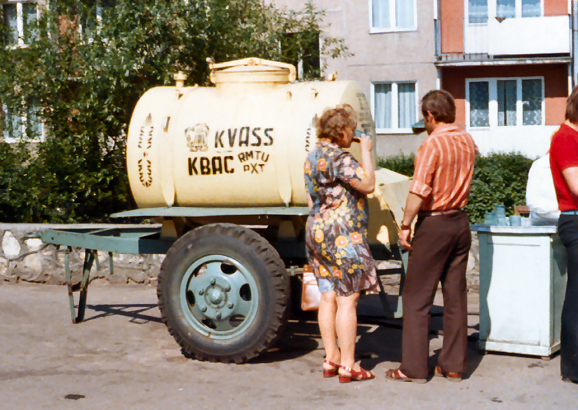
In the 1960s, kvass entered a new era of mass production—and Soviet leaders even hoped it might conquer the world. In 1964, the New York Times reported that then-Soviet Premier Nikita Khrushchev announced his plans to launch kvass internationally. “Kvass is to compete with Coca‐Cola and the rest of the imperialist brews and is to be pushed by advertising methods barely distinguishable from those of the hated capitalists. A campaign slogan has not yet been chosen but, on the home front at least, is likely to be something on the lines of ‘It’s fun reaching your production norm with Kvass.’”
In actual fact, marketing generally centered upon kvass’s apparently beneficial effects on the digestive organs, the cardiovascular system, and “the breathing of the life cells.” Coca-Cola executives were correctly “unconcerned” by this show of Soviet neo-colonialism, the paper reported, and the drink did not take off worldwide.
Within the Soviet Union, however, where neither Coke nor Pepsi could be bought or sold, kvass had never been more popular. From 1967, vendors sold the drink on street corners out of iconic yellow barrels, labeled квас. Before Pepsi’s three billion dollar deal with the Soviet Union, 240-gallon “tanker-cistern trailers”, originally designed for transporting milk, were filled with the drink and wheeled through Russian cities and towns. The drink was sold out of communal glass mugs, given a quick rinse between customers, and came with horror stories about floating insects and other nasties in the liquid. But that did little to dampen the enthusiasm of drinkers: “Like beer, kvass is drunk chilled, so the appearance of carts with kvass barrels on the streets meant that summer was nigh,” remembers Sergey Grechishkin in his memoir Everything is Normal: The Life and Times of a Soviet Kid. “Kvass was one of the great pleasures of a Soviet kid’s life, alongside ice cream and elusive bananas.”

But as the Soviet Union came to an end, Russians were enchanted by all the possibilities the end of isolationism presented—many of which were gastronomic. From the early 1990s, Pepsi and Coca-Cola became readily available. Kvass was left by the wayside—a boring relic of a now irrelevant age. Unlike kvass and its communal barrels, Pepsi was sold from kiosks with free disposable plastic cups, which Russians reused and repurposed variously as drinking vessels, ashtrays, seed pots, or thingummy containers. That “explosion of entirely unknown flavors,” Grechishkin remembers, was a fascinating “first gulp of a faraway world.” The Iron Curtain was on its way down, and cola drinks tasted like the future.
In the early 2000s, as Russians’ initial enchantment with all things Western began to fade, kvass returned to Russian streets. The barrels were repaired, repainted, and rolled out once again, to explosive effect: Between 2001 and 2009, according to one report, sales of kvass grew by 1520 percent yearly. It was around this time that Nikola first began to air its patriotic, anti-Western ads, variously featuring Michael Jackson, Ronald Reagan, and other “problematic” American figures. Labels often featured bucolic scenes of wheatfields—a promise of the bottled essence of the Russian countryside in each drink.
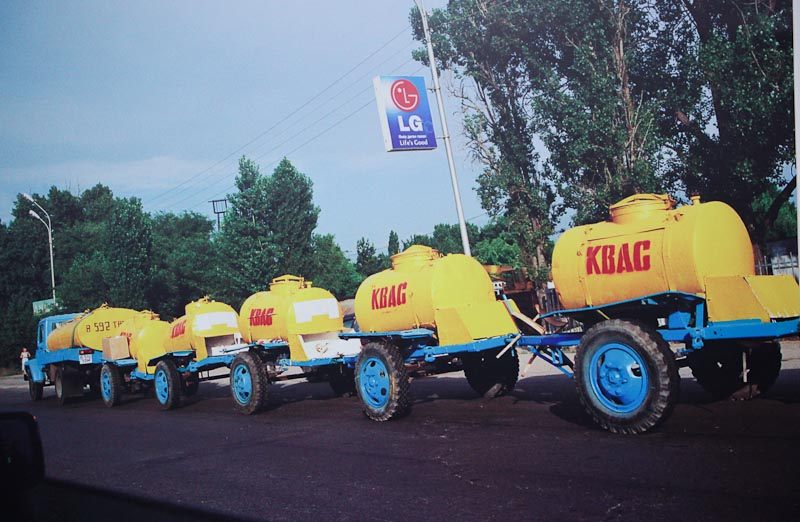
In 2014, Vladimir Putin fanned the fire. In a nationally televised interview, he joked that a journalist was drunk on kvass: In the months that followed, sales climbed once again. Even Heineken announced that it would produce its own version of the drink, keen to capitalize on a domestic market hungry for more Russian goods. “Loving kvass became a way of reclaiming a sense of national pride,” writes Bela Shayevich in Made in Russia: Unsung Icons of Soviet Design. Nearly 200 years after Vyazemsky coined the phrase “kvass patriotism,” the drink has come to stand for precisely the same pro-Russian fervor he first had in mind in 1827.
Gastro Obscura covers the world’s most wondrous food and drink.
Sign up for our regular newsletter.




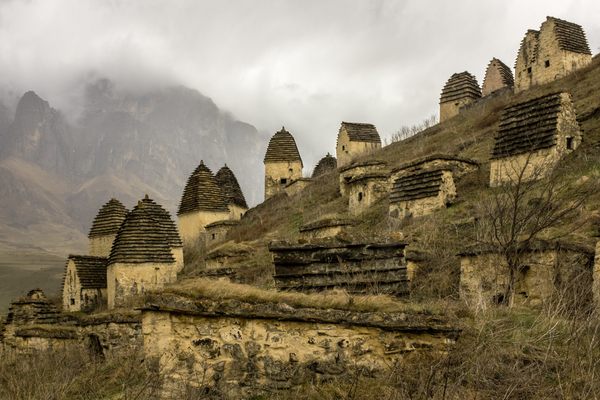


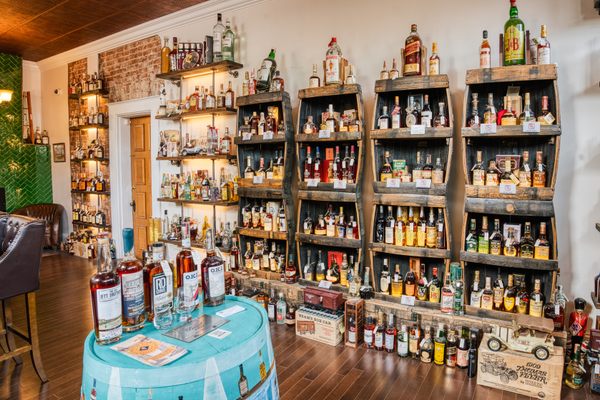



























Follow us on Twitter to get the latest on the world's hidden wonders.
Like us on Facebook to get the latest on the world's hidden wonders.
Follow us on Twitter Like us on Facebook